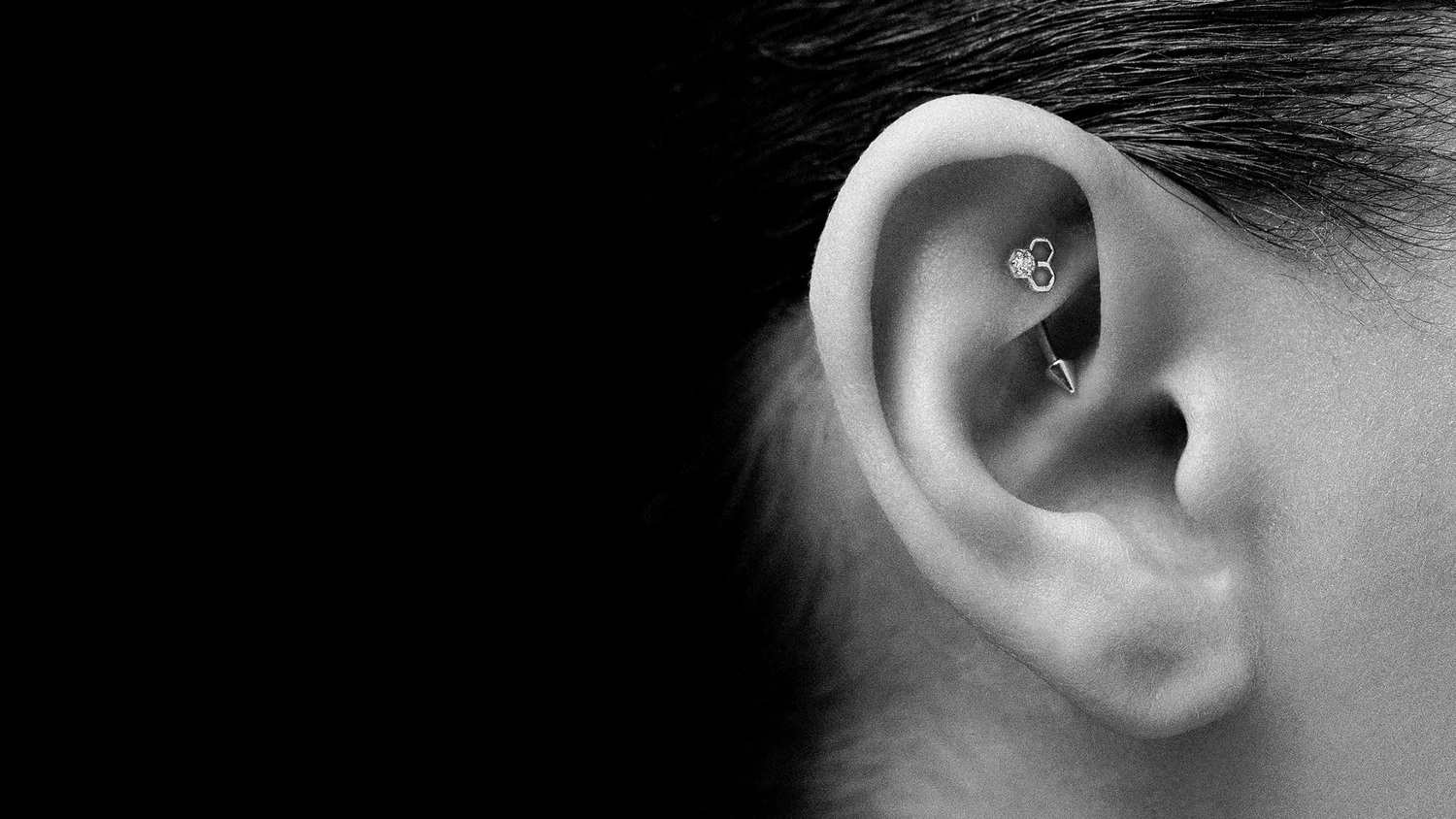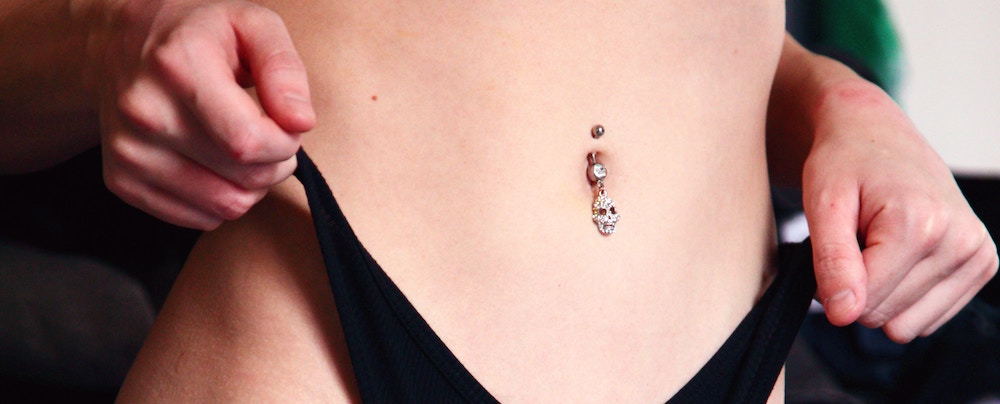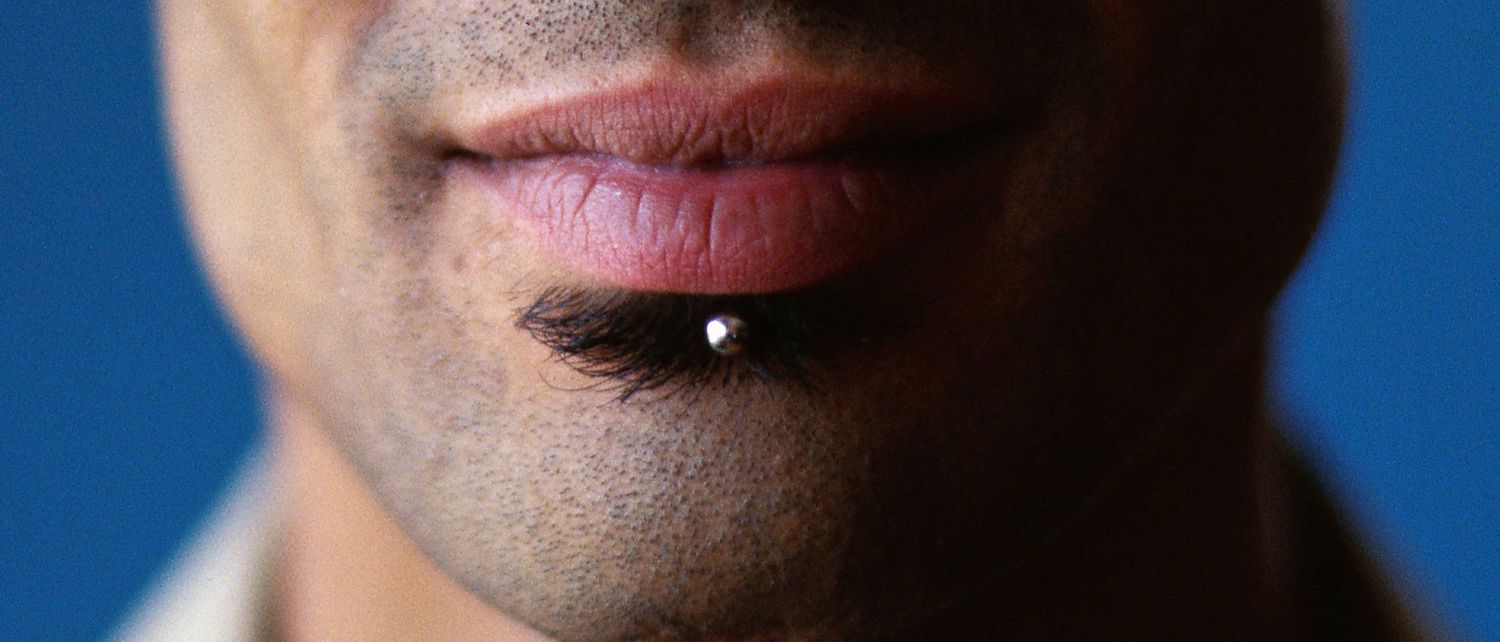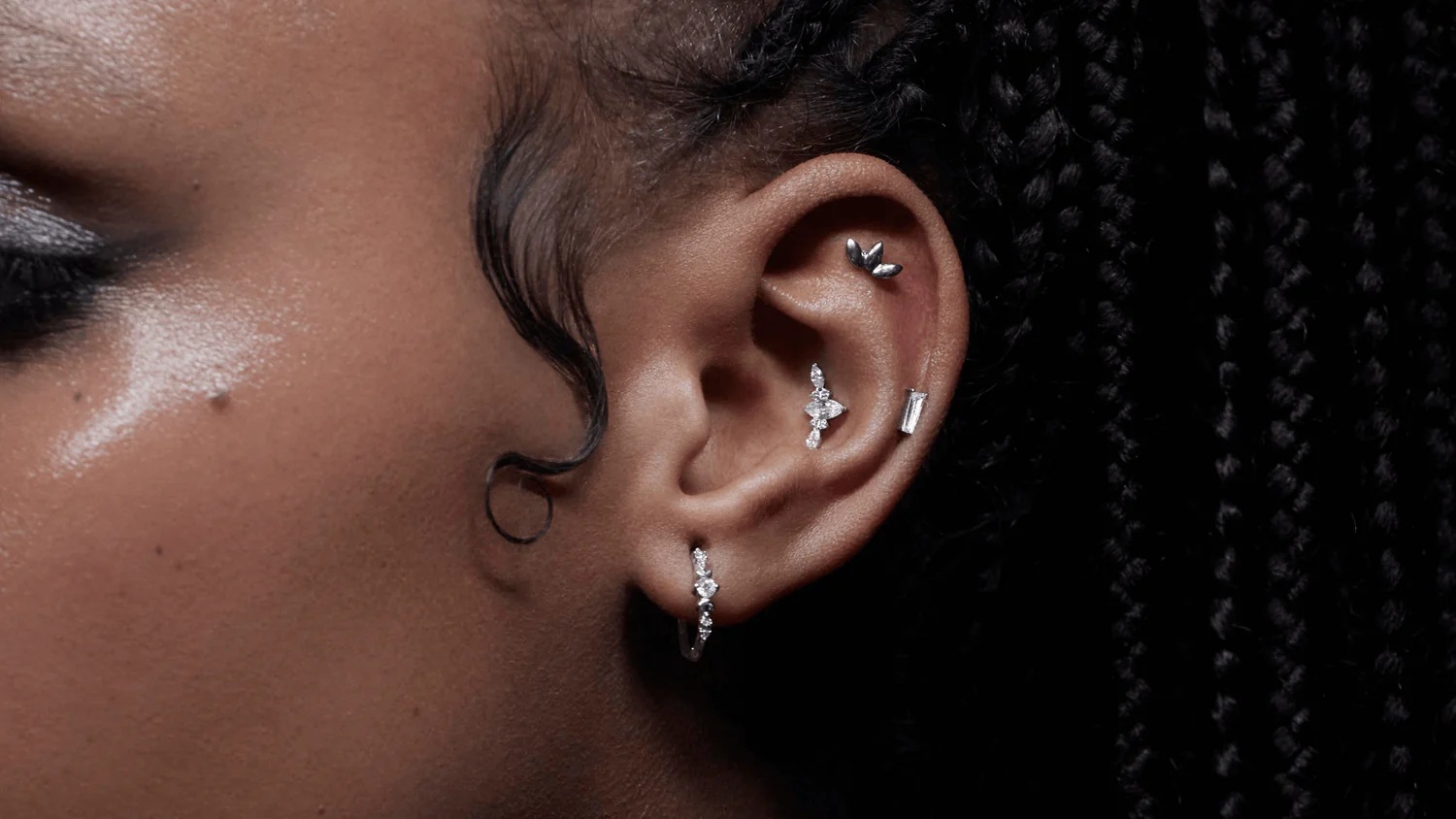Piercing Services in London
Welcome to the epicentre of body modification fashion: London. The city’s pulse beats strong with self-expression, and body piercing has evolved far beyond a simple act of rebellion into a sophisticated art form. From the curated constellations on an ear to a subtle, sparkling nostril stud, piercing is a powerful way to accentuate your individuality. London is a global leader in this trend, offering a dazzling array of studios and styles.
But with this popularity comes a critical responsibility. Unlike a piece of clothing, a piercing is a modification to your body. The choice of where to get it done is a decision rooted in trust, safety, and expertise. A professional, clean, and knowledgeable studio is not just a preference; it is an absolute necessity. The difference between a beautifully healed piercing and a painful, problematic experience lies entirely in the hands of the piercer and the standards of the studio. A rushed job with low-quality jewellery in a questionable environment can lead to irritation, infection, scarring, and disappointment. Conversely, a procedure performed by a skilled professional using implant-grade materials in a sterile setting results in a beautiful piece of art that heals perfectly and brings you joy for years.
This is where PinkTatPier sets the benchmark. We understand that a piercing is a delicate procedure that requires medical-grade hygiene, anatomical precision, and an artist’s eye. We have built our reputation on being a sanctuary of safety and style, a place where you can feel completely confident entrusting us with your body. Our philosophy is simple: we will never compromise on safety, and we believe that every client deserves the highest quality jewellery and the most professional experience possible.
This guide is our commitment to transparency and education. We will walk you through every aspect of the piercing journey in London. We’ll explore the most popular types of piercings, explain the critical importance of choosing the right jewellery, demystify the entire procedure from start to finish, and provide you with an exhaustive aftercare plan. This is your all-in-one resource for making an informed, confident decision. By the end, you’ll not only understand what makes a “professional piercing in London” truly exceptional, but you’ll know why PinkTatPier is the city’s most trusted destination for the art of body piercing.

Piercing Services in London
Part 1: The World of Piercings: Finding Your Perfect Placement
The possibilities in body piercing are nearly endless, offering a unique way to adorn almost any part of the body. Each placement offers a different aesthetic and comes with its own considerations regarding healing time, jewellery styles, and anatomy. Let’s delve into some of the most sought-after piercing services in London, all of which are performed with expert precision at PinkTatPier.
The Art of the Ear: From Classic Lobes to Curated Constellations
The ear is a canvas of immense potential, making “ear piercing in London” one of our most requested and creatively fulfilling services. The modern trend has moved beyond a single lobe piercing towards the “curated ear”— a personalised, artful arrangement of multiple piercings that flow together to create a unique story on your skin. Our piercers are not just technicians; they are stylists who can help you map out your entire ear project, from the first piercing to the last.
- Lobe Piercings: This is the classic starting point and the most common piercing in the world. But classic doesn’t mean boring. We offer perfectly spaced single, double, and triple lobe piercings, as well as “stacked” lobes (a small second piercing placed just above the first) to create a more decorated look. Lobes are fleshy and have excellent blood flow, making them the fastest and easiest piercings to heal, typically within 6-8 weeks.
- Cartilage Piercings: This is where the true artistry begins. The cartilage is the firm, structural tissue of the ear, and it offers a multitude of popular placements:
- Helix Piercing: Located on the upper, outer rim of the ear’s cartilage. The helix is incredibly versatile, perfect for showcasing a sparkling stud, a seamless ring, or a statement clicker hoop once fully healed. Healing time is typically 6-12 months.
- Daith Piercing: Nestled in the innermost fold of cartilage, the daith has become a statement piece. It’s a striking placement for an ornate, decorative hoop. While some clients anecdotally report it helps with migraines, it should be chosen for its aesthetic beauty first and foremost. Healing can take 9-12 months.
- Tragus Piercing: The tragus is the small, oval flap of cartilage that partially covers the ear canal. A piercing here is subtle, stylish, and hugely popular for small, delicate studs. Due to its placement, be mindful of earphones during the 6-9 month healing period.
- Rook Piercing: This is a vertical piercing through the fold of cartilage right above the daith, on the anti-helix. It’s a unique and eye-catching placement, typically adorned with a small curved barbell. Healing time is often 9-12 months.
- Conch Piercing: The conch is the inner “cup” part of the ear. An “inner conch” is pierced for a stud, sitting beautifully in the centre of the ear’s cartilage. An “outer conch” is pierced on the flatter part between the helix and anti-helix, often allowing for a large hoop to wrap around the ear’s outer rim once healed. Healing takes 6-12 months.
- The “Curated Ear” Trend in London: The ultimate goal for many piercing enthusiasts is a fully realised “curated ear.” This involves a collaborative design process with our piercers. We consider your unique ear anatomy, existing piercings, and personal style to create a balanced and harmonious composition. We can plan a long-term project, adding one or two piercings at a time, to build your perfect constellation of fine jewellery.
Facial Piercings: Accentuating Your Features
Facial piercings are a bold and beautiful way to highlight your best features. When done with precision and adorned with high-quality jewellery, they enhance your look with a touch of personal flair.
- Nose Piercing (Nostril & Septum): A timeless classic that has never gone out of style. “Nose piercing London” is a consistently high-demand service at our studio.
- Nostril Piercing: Placed on the crease of the nostril, this piercing is perfect for a delicate stud, a sparkling gem, or a snug-fitting hoop once fully healed (typically after 4-6 months).
- Septum Piercing: This piercing passes through the “sweet spot”—a small, thin membrane of flesh at the front of the nasal septum, not the cartilage itself. When done correctly, it’s a relatively low-pain piercing. It’s perfect for a circular barbell (which can be flipped up and hidden for work) or a decorative clicker ring. Healing takes about 6-8 weeks.
- Lip Piercings (Labret, Monroe, Medusa): Lip piercings offer a variety of ways to make a definitive style statement.
- Labret Piercing: Traditionally refers to a single piercing centered below the lower lip, worn with a flat-back stud.
- Monroe/Madonna Piercing: Placed on the side of the upper lip, mimicking a beauty mark.
- Medusa (Philtrum) Piercing: A single stud placed in the philtrum, the central divot above the upper lip.All lip piercings require careful attention to oral hygiene during healing (4-8 weeks) and are fitted with a longer bar initially to accommodate swelling.
- Eyebrow Piercing: A surface piercing that adds an edgy yet stylish accent to the face. It is typically performed vertically at a slight angle on the outer corner of the eyebrow, following the natural line of the brow bone. Healing takes about 8-12 weeks.

Piercing Services in London
Body Piercings: The Ultimate Form of Self-Expression
For those looking to adorn their body, these piercings remain popular and powerful choices, requiring the utmost professionalism and respect for client privacy, which is a cornerstone of our service.
- Navel (Belly Button) Piercing: A hugely popular choice, the “belly button piercing London” service is a ’90s classic that has seen a major resurgence. It’s perfect for showcasing stylish dangling gems or simple, sparkling studs. However, success is highly dependent on having the correct navel anatomy. A traditional navel piercing requires a distinct “lip” or flap of skin at the top of the navel. Our expert piercers will always perform an anatomical assessment first; if your anatomy is not suitable, we will honestly explain why and will not perform a piercing that is destined to fail. Healing can take a full 9-12 months.
- Nipple Piercing: A bold and personal choice for people of all genders. When done correctly by a professional, a “nipple piercing London” can be an empowering and aesthetic modification. We perform this service with the highest level of professionalism in a private, sterile room. Client dignity, comfort, and safety are our absolute priorities. We use single-use, sterile equipment and implant-grade titanium bars to ensure the best possible healing outcome, which typically takes 6-12 months.
Part 2: The Non-Negotiables: Safety, Hygiene, and Jewellery
This is, without question, the most important section of this guide. Style is subjective, but safety is absolute. A cheap or unhygienic piercing is a dangerous gamble with your health. At PinkTatPier, we don’t just meet the industry standards for safety; we strive to exceed them. Understanding what defines a truly “safe piercing in London” will empower you to make the best choice for your body.
The PinkTatPier Hygiene Protocol: Above and Beyond the Standard
We treat every piercing with the clinical seriousness it deserves. Our studio is a clean, controlled environment where your health is our number one priority.
- Medical-Grade Sterilisation: The only way to ensure instruments and jewellery are 100% sterile is through steam sterilisation in an autoclave. This is a medical-grade machine that uses high pressure and high-temperature steam to kill all bacteria, viruses, fungi, and spores. All our reusable instruments (forceps, etc.) and all jewellery for initial piercings are processed in our regularly spore-tested autoclave before every single use.
- Needles vs. Guns: Why We ONLY Use Professional Piercing Needles: This is a critical point of distinction. We will never, under any circumstances, use a piercing gun.
- Trauma: Piercing guns use blunt force to ram a stud through tissue. This shatters the surrounding tissue, causing excessive swelling, pain, and a much longer, more complicated healing process. A professional hypodermic needle is razor-sharp and hollow, cleanly slicing through the tissue to create a neat channel for the jewellery, resulting in minimal trauma and a faster, cleaner heal.
- Sterilisation: Piercing guns are made of plastic and cannot be placed in an autoclave. Wiping them with an antiseptic wipe is not enough to kill bloodborne pathogens. They are a significant vector for cross-contamination.
- Accuracy & Jewellery: Guns use low-quality, butterfly-back studs that are too tight, harbour bacteria, and are often made of mystery metals. A professional needle piercing allows for the insertion of high-quality, body-safe jewellery that is the correct length to accommodate swelling.
- Aseptic Technique & Single-Use Supplies: Our piercers wash their hands and wear sterile, single-use gloves for every procedure. The client’s skin is thoroughly prepped with a medical-grade skin antiseptic. All items like needles, gauze, and marking pens are single-use and are disposed of in a sharps container immediately after the procedure. This is the same aseptic technique used in medical settings to prevent infection.
Jewellery Matters: Choosing the Right Material for a Happy Healing
What your piercing is pierced with is just as important as the procedure itself. Poor quality, mystery-metal jewellery is the number one cause of allergic reactions, irritation bumps, and failed piercings. We believe in providing only the best.
- The Gold Standard: Implant-Grade Titanium (ASTM F-136): This is the premier material for all initial piercings and the cornerstone of our practice. It’s the same material grade used for surgical implants like bone screws and hip replacements.
- Hypoallergenic: It is completely nickel-free, making it perfect for those with sensitive skin or metal allergies.
- Biocompatible: The body does not react to it, allowing for a smooth and easy healing process.
- Highly Polished: All our “titanium piercing jewellery in London” has a mirror-smooth polish, which prevents bacteria from clinging to it and reduces irritation within the piercing channel.
- The Touch of Luxury: 14k/18k Solid Gold (Nickel-Free): For clients who want to start with something truly special, we offer a stunning, curated collection of solid gold jewellery. This is the core of our “fine jewellery piercing London” service.
- Body-Safe Alloys: We only use solid 14k or 18k gold from the world’s most reputable body jewellery manufacturers. Crucially, these are specially alloyed to be nickel-free and biocompatible.
- Solid, Not Plated: Plated or gold-filled jewellery is unsuitable for healing piercings as the thin outer layer can flake off, exposing the mystery metal underneath and causing severe irritation. We only sell and pierce with solid gold.
- The “Surgical Steel” Myth: You will see this term used frequently in low-quality piercing shops. The term “surgical steel” is highly unregulated and can refer to dozens of different alloys, many of which contain significant amounts of nickel—a very common allergen. While some high-quality steel grades exist (e.g., ASTM F-138), the ambiguity of the term makes it a risk. We choose to stick to the guaranteed safety and biocompatibility of implant-grade titanium and nickel-free solid gold.
Part 3: Your Piercing Journey at PinkTatPier
We’ve designed a seamless, professional, and reassuring process to ensure every client feels comfortable, informed, and excited from the moment they walk through our doors.
Step 1: The Consultation – Curation, Anatomy, and Jewellery Selection
Your journey begins with a conversation. When you come to PinkTatPier, you’re not just getting a hole poked in you; you’re receiving a professional consultation.
- Discussion: We’ll talk about your desired placement and aesthetic goals.
- Anatomical Assessment: This is a crucial step many places skip. Our expert piercers will assess your unique anatomy. Do you have the right fold for a rook? Is your navel flap pronounced enough for a successful belly button piercing? We will only proceed if your anatomy is suited for the piercing, ensuring a higher chance of successful healing.
- Curation & Selection: This is the fun part! We will guide you through our extensive collection of implant-grade titanium and solid gold jewellery. We’ll help you choose the perfect piece that not only fits your style and budget but is also the correct size and shape for your specific anatomy and the initial healing period.

Piercing Services in London
Step 2: The Procedure – A Swift, Safe, and Professional Experience
We perform all piercings in a private, dedicated, and sterile piercing room.
- Consent & Preparation: You’ll fill out a digital consent form while we prepare the sterile station. Your chosen jewellery and all necessary instruments will be processed in our autoclave.
- Marking: The piercer will put on sterile gloves and thoroughly clean the area with a medical-grade antiseptic. They will then use a single-use, skin-safe marker to dot the exact placement point. You will be given a mirror and the final approval to ensure you are 100% happy with the position. We will re-mark it as many times as needed until it’s perfect.
- The Piercing: The procedure itself is incredibly fast. The piercer will guide you through your breathing, asking you to take a deep breath in and then exhale slowly. The piercing is performed swiftly and smoothly on the exhale. You’ll feel a quick, sharp pinch, and then it’s over before you know it.
- Jewellery Insertion & Securing: The piercer will expertly insert your chosen sterile jewellery into the new piercing and secure the end.
- Final Clean-Up & Aftercare Briefing: We’ll clean the area one final time, and your piercer will go over the aftercare instructions with you in detail and answer any questions you may have. You will also receive the instructions in writing.
Spontaneity Meets Safety: Our “Walk-in Piercing London” Service
We understand that sometimes the urge for a new piercing is spontaneous! While we always recommend booking an appointment online to guarantee your slot, especially for consultations or multiple piercings, we do our best to accommodate “walk-in piercing London” clients whenever our schedule allows. It’s always a good idea to call the studio ahead of time to check for same-day availability. Whether you have an appointment or walk in, our standards of safety, hygiene, and care remain exactly the same.
Part 4: Aftercare and Pricing
Your piercing is done, but your responsibility has just begun. Proper aftercare is 50% of a successful piercing. Following these instructions diligently is the key to a happy, healthy piercing that will last a lifetime.
The Ultimate Piercing Aftercare Guide: Your Roadmap to Perfect Healing
Healing times vary greatly by placement and from person to person. Lobes may heal in 6-8 weeks, while cartilage can take 6-12 months or even longer. Be patient with your body.
- CLEAN your new piercing twice a day with a sterile saline wound wash. You can find this at any chemist or purchase it directly from our studio. Spray it directly on the front and back of the piercing, allowing it to soak for a minute to soften any “crusties” (dried lymph fluid, which is normal).
- DO NOT TOUCH IT. This is the most important rule. Do not touch, twist, turn, or play with your jewellery. Your hands carry bacteria, and twisting the jewellery damages the delicate healing tissue (the fistula) inside the piercing channel.
- RINSE thoroughly in the shower. Allow clean, running water to rinse the piercing after cleaning. This helps wash away any saline residue and debris.
- DRY the area gently and thoroughly. After cleaning, gently pat the area dry with a clean piece of paper towel or a non-woven gauze square. Do not use fabric towels, as they can harbour bacteria and snag on your jewellery.
- AVOID sleeping on your new piercing. This is especially crucial for ear cartilage piercings. Sleeping on them can cause pressure and change the angle of the piercing, leading to irritation bumps and permanent migration. Use a travel pillow and sleep with your ear in the hole to avoid this.
- AVOID harsh chemicals and irritants. Do not use alcohol, peroxide, tea tree oil, or any harsh soaps on your piercing. Stick to sterile saline solution only. Avoid getting makeup, hair products, and perfumes in your fresh piercing.
- DOWNSIZE YOUR JEWELLERY. This is a critical and often overlooked step. For many piercings (especially cartilage and lip piercings), the initial bar is longer to accommodate swelling. It’s crucial to return to the studio at the recommended time (usually 4-8 weeks) to have your piercer swap it for a snugger, shorter post. Failure to downsize can lead to snagging, irritation bumps, and migration issues. This check-up is a vital part of our service.
Understanding “Piercing Prices in London”: Investing in Quality
We believe in complete transparency when it comes to our “piercing prices London”. Our pricing structure is designed to reflect the quality of our service and materials.
- Structure: The final price you pay is composed of two parts:
- A Service Fee: This is a set fee for a specific piercing placement. It covers the piercer’s time, expertise, and the cost of all sterile, single-use supplies (needles, gloves, gauze, skin prep, etc.).
- The Cost of Jewellery: This is the price of the piece you select to be pierced with. This price varies depending on whether you choose a basic, implant-grade titanium stud or a luxurious solid gold and diamond piece.
- Total Cost = Service Fee + Jewellery Cost.
- Value Over Cost: While you may find cheaper piercing services, it’s vital to ask what you’re paying for. Our prices reflect our investment in the best piercers, the safest equipment (autoclaves, sterile supplies), and the highest quality body-safe jewellery in the world. This is an investment in your health, safety, and the long-term success of your piercing. We provide a premium service because your body deserves nothing less.

Piercing Services in London
Part 5: Frequently Asked Questions (FAQ) about Piercing
- Does it hurt more than a tattoo?The sensation is very different and subjective. Piercing pain is a quick, sharp, intense pinch that is over in a second. A tattoo involves a prolonged scratching or vibrating sensation that can last for hours. Most clients are surprised at how quick the piercing procedure is and find the pain very manageable.
- Can I bring my own jewellery to be pierced with?For your safety, we cannot pierce you with jewellery from outside our studio. We can only guarantee the material quality, surface polish, and, most importantly, the sterility of the jewellery that we provide. Our jewellery is specifically designed for healing piercings and is processed in our autoclave.
- What is a piercing bump (irritation bump) and how do I get rid of it?Irritation bumps are common, especially on cartilage piercings like the helix and nostril. They are small, fluid-filled bumps that appear next to the piercing. They are NOT infections (which involve pus, heat, and spreading redness) and they are not keloids. They are simply a sign that the piercing is being irritated. Common causes include sleeping on it, knocking or snagging it, improper aftercare, or incorrect jewellery size. The best course of action is to be extra diligent with your saline cleaning, eliminate the source of irritation, and book a check-up with us. Often, a simple jewellery downsize is all that is needed.
- When can I change my jewellery for a hoop?You should not change the jewellery yourself until the piercing is fully healed. This is especially important for piercings you want to wear a hoop in, like a nostril or helix. A hoop has a larger circumference and moves around more, which can cause significant irritation to a healing piercing. You must wait until the full healing period is complete (e.g., 6-12 months for a helix) before switching to a hoop to avoid complications.
- How do I know if my piercing is infected?It’s easy to mistake normal healing symptoms (soreness, redness, clear/whiteish lymph fluid) for an infection. True signs of an infection are much more severe and include: thick, opaque yellow or green pus; excessive swelling that worsens over time; skin that is hot to the touch; and a spreading, dark redness around the piercing site. If you suspect an infection, do not remove the jewellery, as this can trap the infection inside. Contact us for advice and see your doctor immediately, as you may need antibiotics.
Conclusion: Your Journey to Self-Expression Starts Here
Choosing to get a piercing is an exciting act of personal expression, a way to adorn your body and celebrate your unique style. In a vibrant city like London, your choices are endless, but no choice is more important than that of a safe, professional, and expert studio.
At PinkTatPier, we offer more than just a piercing service; we offer peace of mind. We provide a clinically sterile environment, the highest quality body jewellery available on the market, and the skilled hands and artistic eyes of piercers who are truly passionate about their craft. We are dedicated to providing an experience that is not just safe, but also comfortable, respectful, and empowering.
We are here to guide you every step of the way, from helping you choose the perfect placement and jewellery during your consultation to supporting you throughout the healing process. Your body is your canvas, and it deserves the absolute best.
